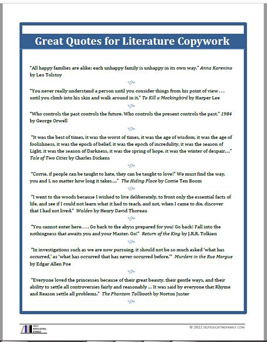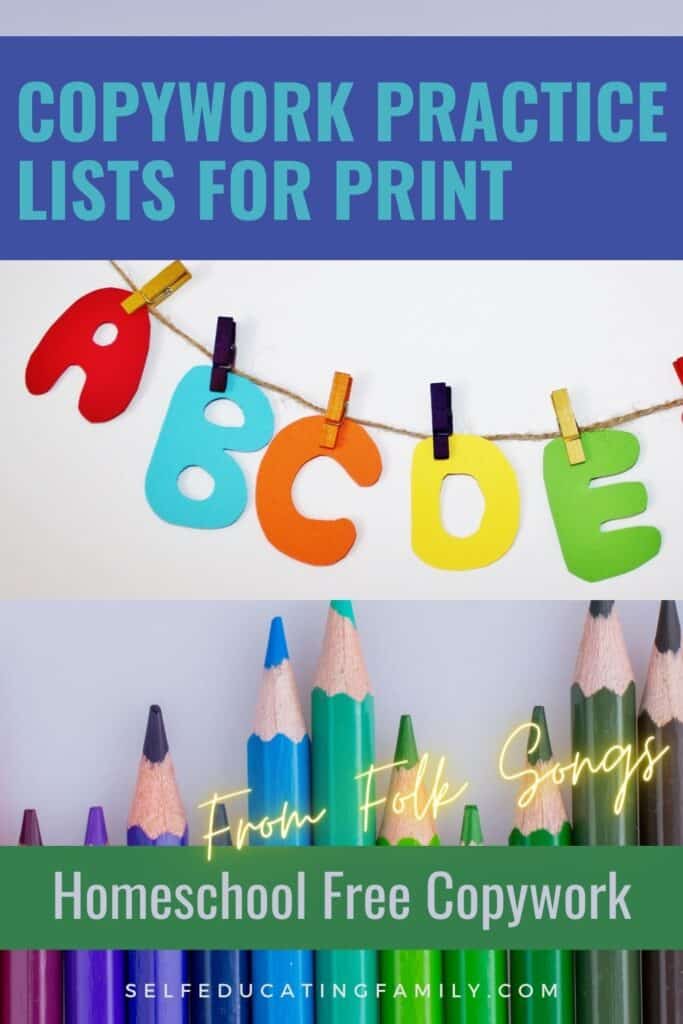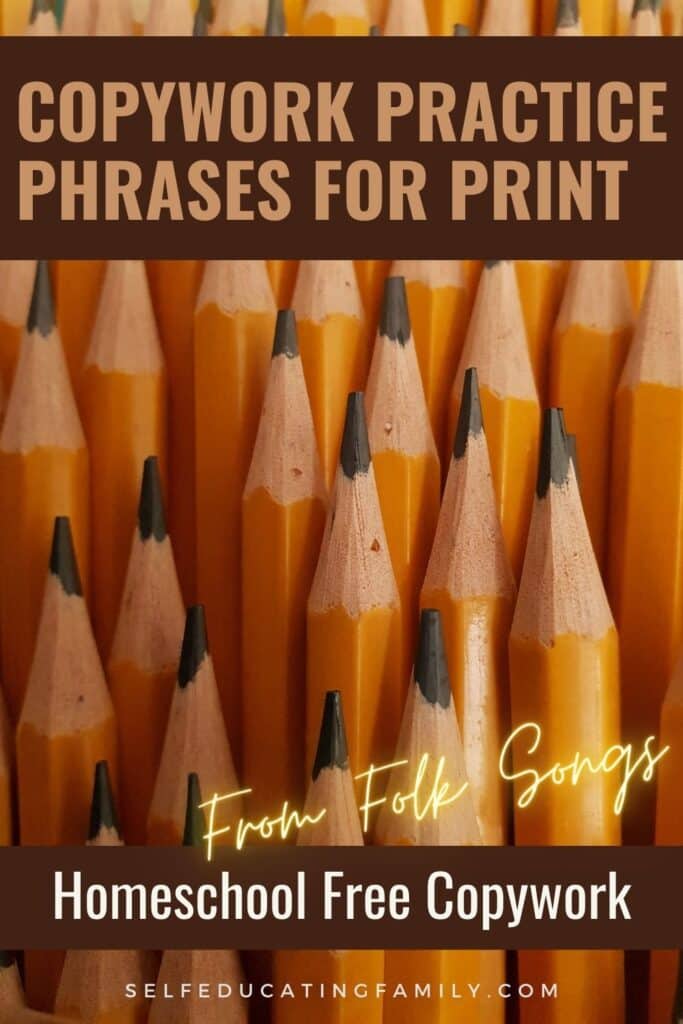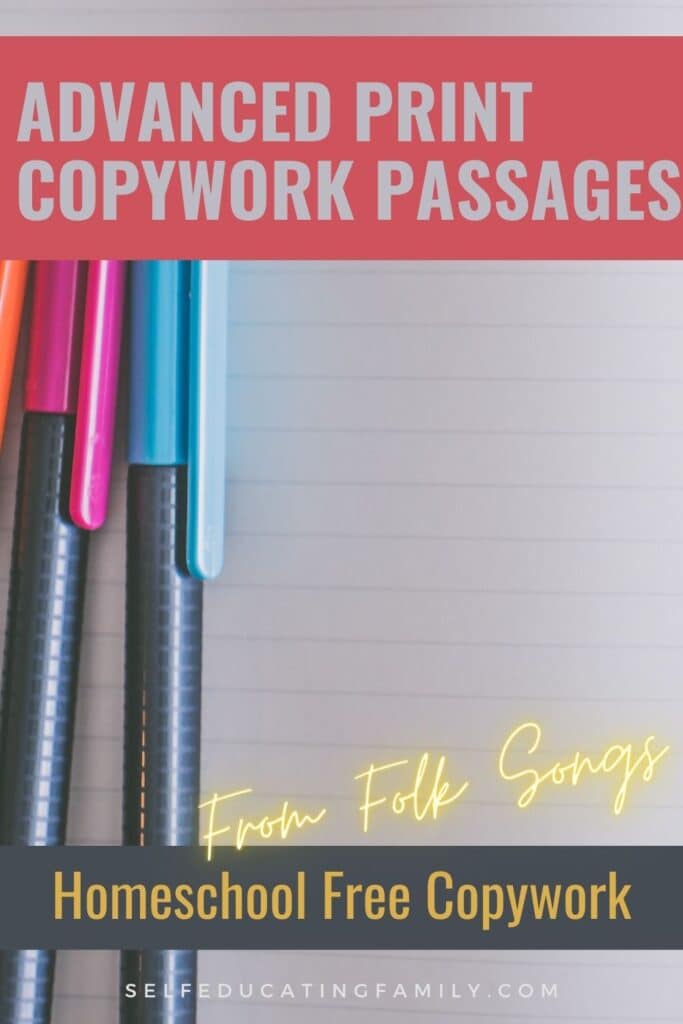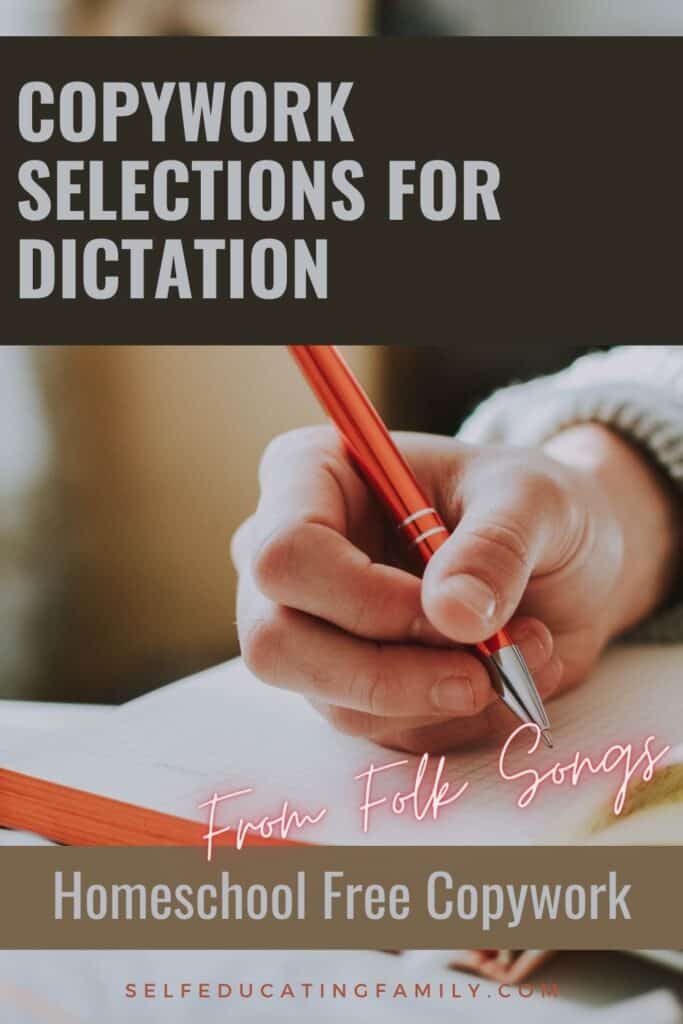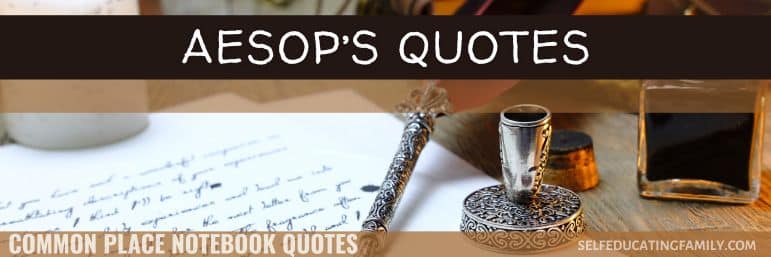What’s inside: Get free copywork for homeschool! This post has multiple-age copywork downloads for you based on the Ambleside Online Folk Song Rotation. Both cursive handwriting practice and print are included.
Free Copywork for Homeschool
Don’t we all need more sources for ready-to-do copywork?
While we all know that finding good sources of copywork, while abundantly available in our living books, actually making some copywork sheets can be a time sink. Writing or printing out the pages for your kiddo to copy takes time. Which, on occasion, if you are like me, you run out of!
Copywork
If you’ve been using copywork in your homeschool for a while and you are familiar with the how-to’s of this method of learning penmanship, grammar, spelling, and sometimes even facts, then read on!
If you need a refresher or are new to using copywork in your homeschool, please refer to some of my earlier articles:
- What is Copywork? And How do I Use It?
- Charlotte Mason Copywork
- Free Charlotte Mason Copywork Passages
Disclosure: This post contains affiliate links, meaning that if you make a purchase after clicking through, SelfEducatingFamily will receive a small commission at no extra cost to you.
What’s inside
Free Homeschool Copywork selections and samples for:
- Print lists
- Print with short phrases
- Print with full sentences
- Cursive with short phrases
- Cursive with sentences
- Full passages for dictation or direct copy into Commonplace books
Remember: 5-10 minutes of well-executed effort. See earlier articles for reminders of what this means.
Also, you can find more resources for free copywork at the end of this article. And additional copywork is available in our shop.
Print lists
Lists are a great way to transition your youngest learners to fluidity. One or two words per line does not overwhelm your kiddo as they work on not just the form of the letter but putting them in a different order.
Lists most often used for the learner who has been working with letter forms and is ready for more challenges include things they are familiar with already:
- Days of the week
- Months of the year
- Numbers (spelled out)
- People in the family
But you can make lists from anything. If your focus is on learning to read, you can start with short vowel rhyming words (like cat, bat, hat, mat). Or if you are reading those learning books, you can use a few words from those books. My family loved the Bob books, but reading and writing didn’t happen at the same time. If that’s the case in your family, then you definitely need more challenging lists.
So here is a simple list with words from the Folk Songs for this semester.
Print with Short Phrases
When you are working with younger learners, they will transition from making the letter forms with effort to a certain level of automaticity. You have a beautiful opportunity to fill their minds with great thoughts (as opposed to twaddle). Even in the simple short phrases of someone learning block lettering.
Here are a few sheets of print with short phrases in block print. These selections are from this term’s folk songs from the Ambleside Online rotation. You are free to use these in your homeschool, printing as many copies as you like. Blank sheets are included also.
Print with full sentences
Short phrases are no longer interesting enough as your learner becomes more fluent in printing. And they can finish them in well under 5 minutes. It’s time to switch to full sentences or longer passages.
Again, since you are using sources with a large variety of well-written examples, your student will be exposed to various literary forms (verse, prose, song lyrics, dialogue, etc.) as well as advanced vocabulary and spelling.
And once again, in these free copywork sheets for your homeschool, I’ve used selections from the Ambleside Online Folk Song rotation from the current semester.
Cursive with short phrases
When your student is learning a new handwriting style, like cursive or italic, even if they are already fluent in one style, they will need to start slowly. Naturally, the more mature the student, the more quickly they will move through the early phases. Nevertheless, it might behoove them to start slowly after they learn the letter forms.
Remember that an excellent way to learn the muscle memory needed for automaticity is “air” writing, and that is very effective for older kids. Once they remember most of the cursive letter forms, move to copying short phrases. It’s OK if they know most, but forget some of the capital letters, for instance. You can use the time guidelines of 5 to 15 minutes to shape who much your student should be doing.
One note for older students: they sometimes try to get away with not their best effort. I’m not saying your kids will try this, but I’ve seen certain children of mine push the limits.
And of course, these sheets from the Folk Songs will keep them excited…
Cursive with sentences
And finally, the last step of copywork before you get to long dictation or direct copy into Commonplace notebooks is to write full sentences or partial sections from your source.
These selections are from Ambleside’s Folk song rotation from this semester.
Tip: These selections are in a 24-point font (about 1/3 of an inch), which may feel too large for fluent writers. But new writers have a strong tendency to shrink their penmanship. Larger is better for their learning to keep the writing larger. This will avoid tension in the hand which can make the writing stilted. So the advice is this: when learning to become fluent in a particular handwriting style, keep your writing larger. After your child is completely fluent, then they can add personality with a smaller hand – provided that it is still legible.
Full passages
The full passages are designed for dictation or direct copy into Commonplace books. The student should be familiar with the passage and be able to write it out smoothly and easily either with no model in front of them (where you dictate to the student) or with plain text on a page separate from the writing page.
Again, the selections are from Ambleside Online’s Folk Songs from this semester.
FAQ
Great copywork can come from great literature. A good example of this would be the St. Crispin’s Day speech from Shakespeare’s Henry V.
Copywork is simply copying words, phrases, or passages from literature.
Copywork can be a valuable tool for homeschoolers to learn language arts like grammar, spelling, sentence structure, and even penmanship. The key is to use living books as your source for the copywork to expose your young learner to great examples of language.
As soon as your youngest learners know their letter forms, they can start copywork proper. Before that, they can do “warming up” copywork by copying strokes and moving up to letters. This will help them learn their letter forms. Additionally, strokes and letters can be “copied” into other forms besides paper, for instance, into a sand tray via their fingers, or onto a whiteboard via fat markers.
The free Library of resources includes more copywork
